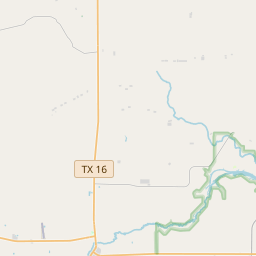First Producing Gas Well in McMullen County and First Gas Pipeline to San Antonio






Thirty years before the first producing gas well was drilled in this county, traces of salt water, sulphur, gas, and oil in water wells gave hints of the presence of petroleum here. For years wildcat drilling went on, but with only moderate success. Then in 1908, a well on Charles Byrne's land began to blow warm sulphur water and gas 120 feet into the air every 8 days, arousing much interest. After this discovery, Byrne, a promoter, set out to locate capitalists to develop his petroleum deposits. Armed with a picture of the gusher and a bottle of area oil, he attracted the attention of W.M. "Bee" Stephenson, his sons Light and Donald, and others. The well they drilled here in 1917-1918, on the Tom Brown Tract, blew in at 816 feet with 62,000,000 cubic feet of natural gas a day, but for 3 months it spewed out of control because of the intense subsurface pressure and inadequate equipment. After other producers were drilled, W.M. Stephenson arranged to pipe gas to San Antonio, 68 miles north, in 1922. Among those joining this enterprise was H.A. Pagenkopf, Wichita Falls oil man. Thus petroleum took a leading role in the economy of McMullen County.
1970
As one of the most visible programs of the Texas Historical Commission (THC), historical markers commemorate diverse topics in Texas history, including: the history and architecture of houses, commercial and public buildings, religious congregations, and military sites; events that changed the course of local and state history; and individuals who have made lasting contributions to the state, community organizations, and businesses.
The state flower of Texas is the bluebonnet. The flower blooms in the spring and is a common sight along the highways and in fields throughout the state.
The county is named after John McMullen, an Irishman who immigrated to Texas in the 1830s and played a significant role in its history. McMullen was known for his involvement in the Texas Revolution and his efforts to establish a colony in the area. Following his death, the county was named in his honor, signifying his impact on the region.
During the late 19th century, McMullen County experienced rapid growth and development. The discovery of oil in the early 1900s provided a major economic boost to the area, attracting numerous oil companies and workers. The oil industry continues to be a significant contributor to the county's economy today.
In recent years, McMullen County has become known for its vast ranchlands and wildlife. Its picturesque landscape and abundance of wildlife make it a popular destination for outdoor enthusiasts, hunters, and nature lovers. Today, the county retains its rural character, while also benefiting from the economic opportunities provided by the energy industry.
McMullen County Timeline
This timeline provides a condensed summary of the historical journey of McMullen County, Texas.
- 1858 - McMullen County is established
- 1860s - The county experiences conflicts with Native American tribes
- 1870s - The first post office is established in Tilden
- 1881 - The county courthouse is built
- 1920s - The oil boom brings significant economic growth to the county
- 1930s - The Great Depression affects the county's economy
- 1960s - Intensified oil and gas production leads to increased prosperity
- 1980s - The oil industry experiences a downturn, impacting the county's economy
- 2000s - McMullen County experiences a resurgence in oil and gas activity